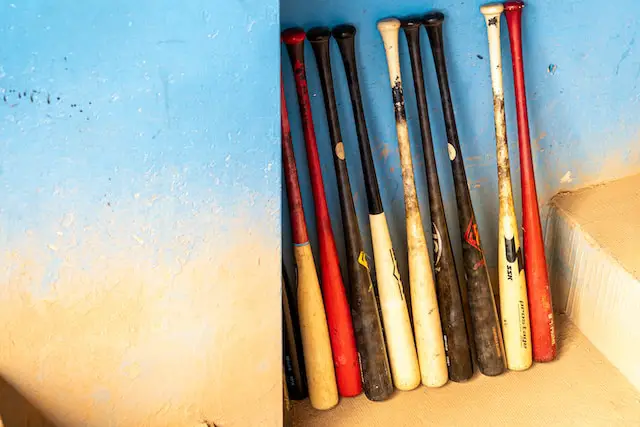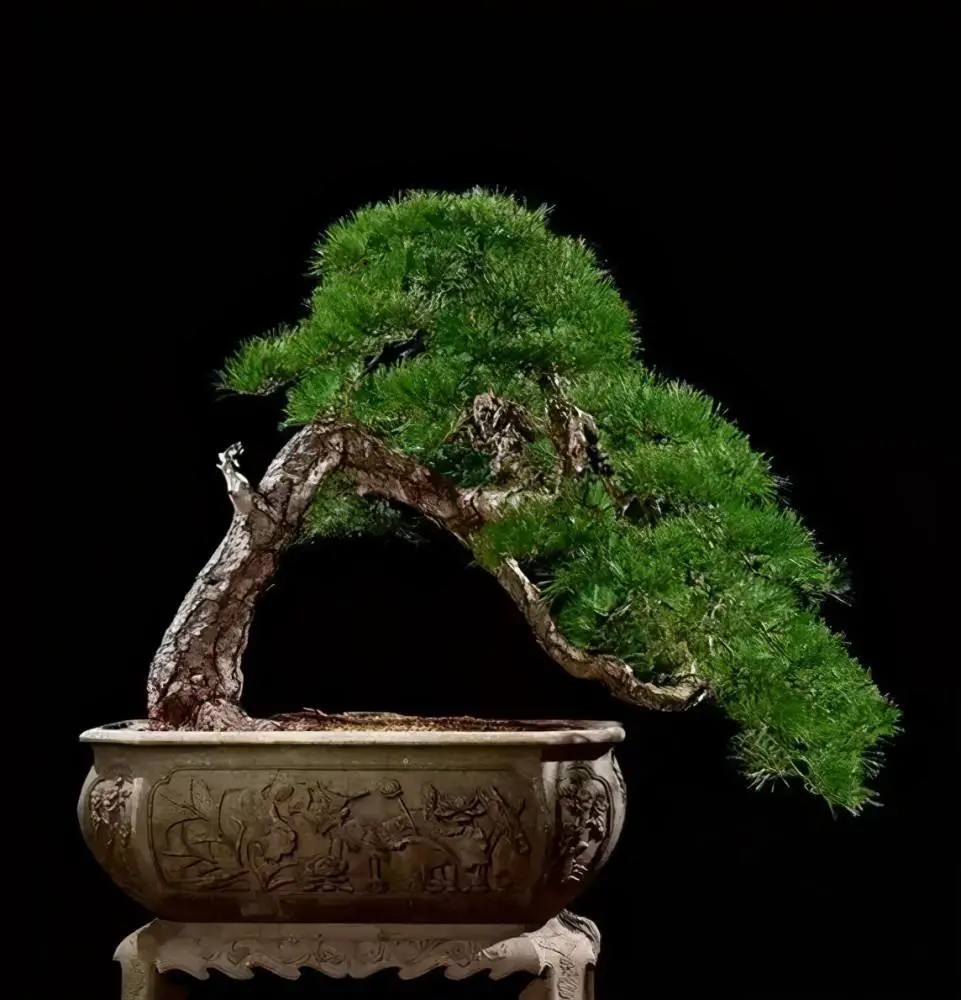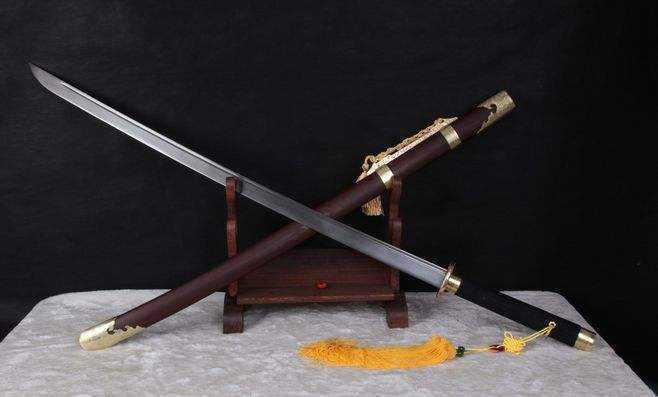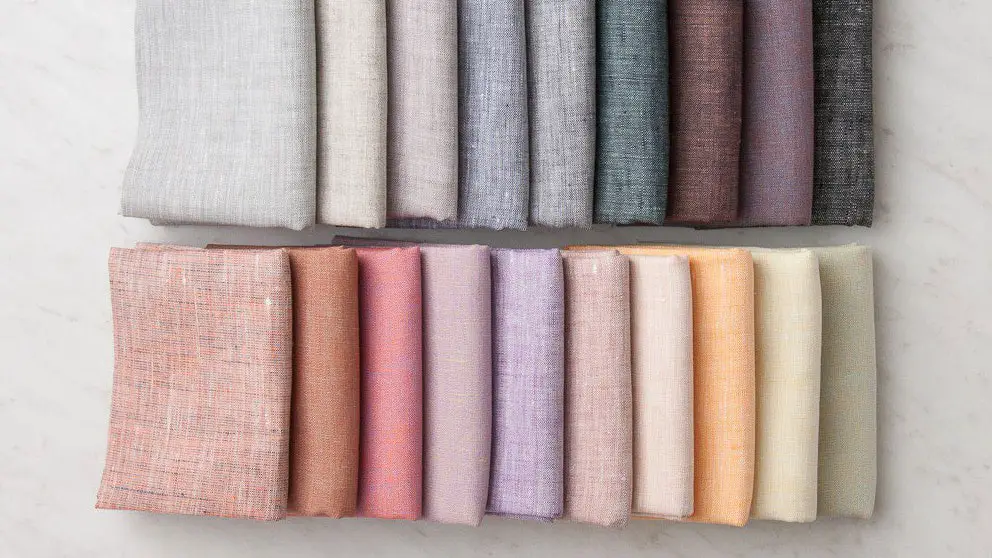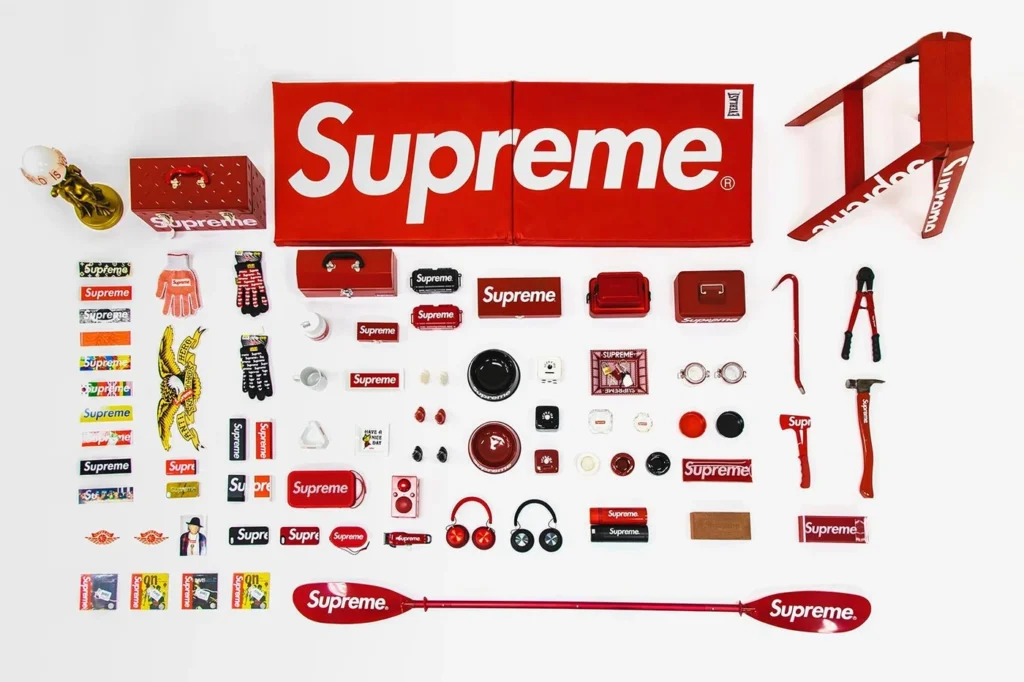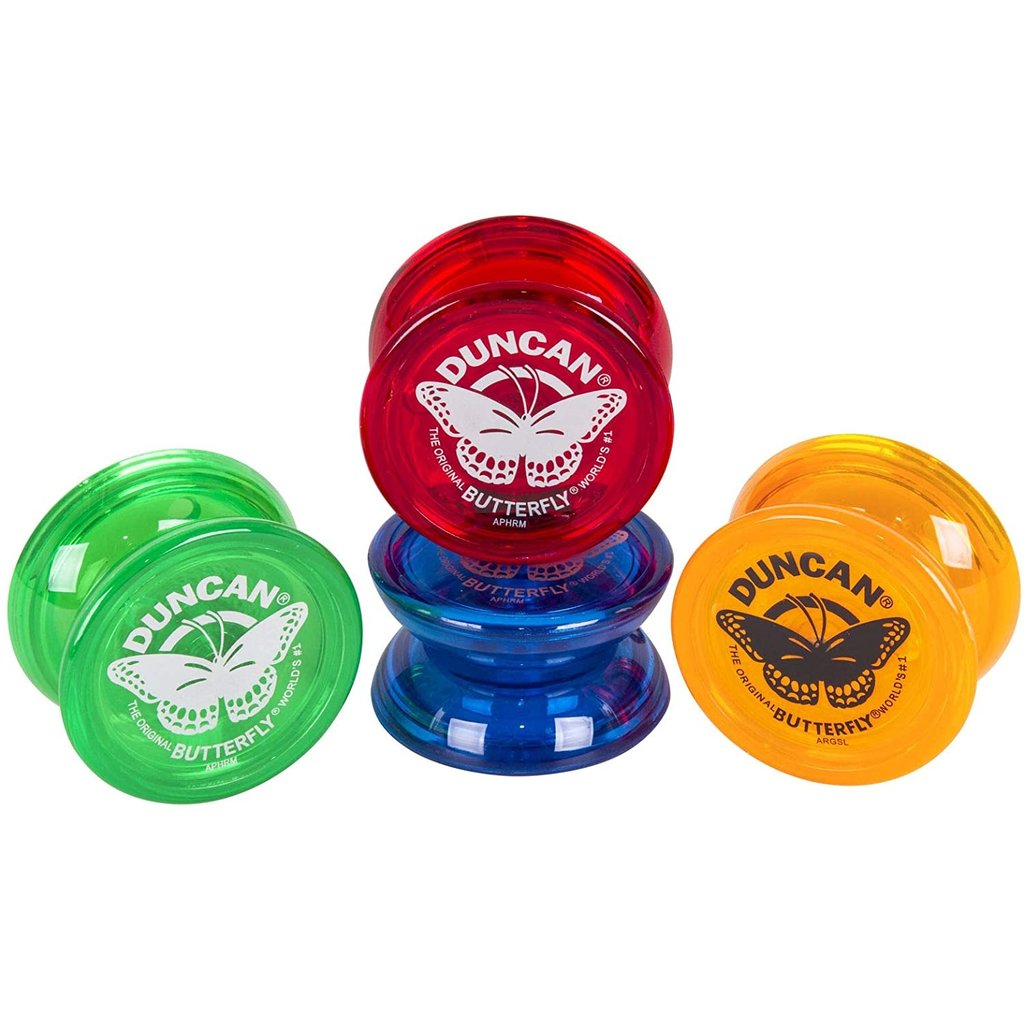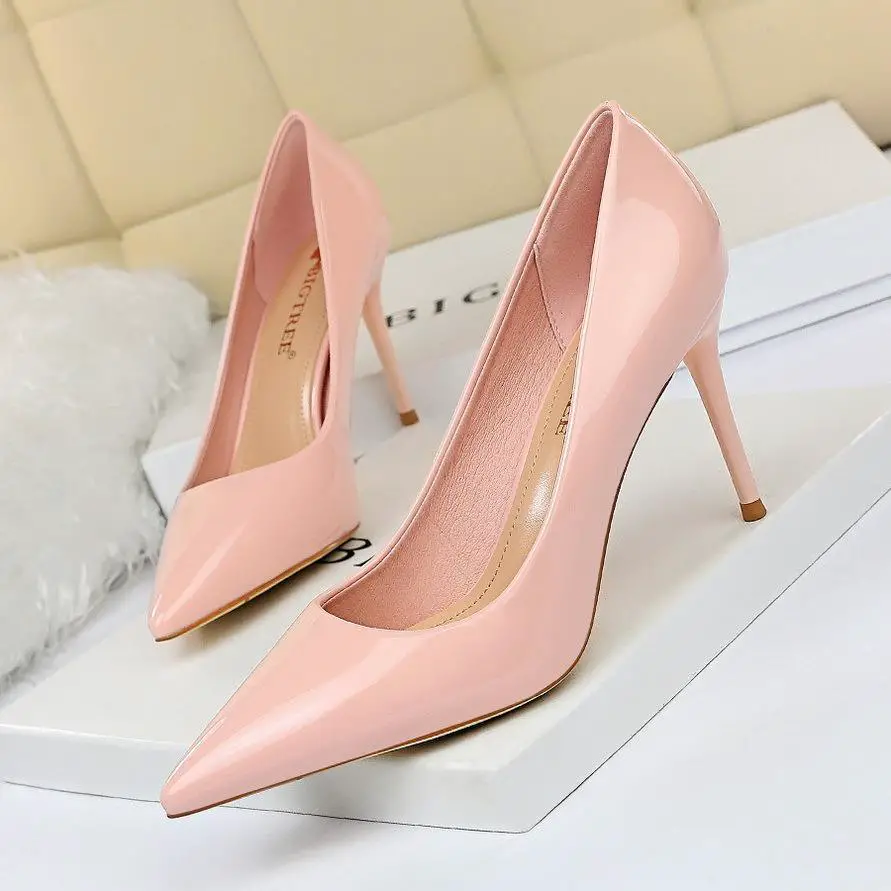Baseball, America’s beloved pastime, has seen its fair share of iconic moments and legendary players. From Babe Ruth’s prodigious swings to Hank Aaron’s record-breaking home runs, the game’s history is intertwined with the significance of the baseball bat.
While baseball bats may seem like ordinary tools of the trade, there are exceptional specimens that transcend their utilitarian purpose, commanding staggering prices in the world of collectors. In this article, we delve into the realm of luxury and exclusivity as we explore the eight most expensive baseball bats ever sold, each representing a piece of baseball history that enthusiasts and collectors alike hold in high esteem.
From limited editions to historic game-used relics, these extraordinary bats encapsulate the spirit of the game and the allure of rare and coveted artifacts. Let’s step up to the plate and unveil the world of the most expensive baseball bats ever recorded.
8 Most Expensive Baseball Bats in the World
| No | Most Expensive Baseball Bat | Price |
| 1 | Babe Ruth’s Baseball Bat | $1.85 million |
| 2 | Lou Gehrig Bat | $1.14 million |
| 3 | Ty Cobb Bat | $1.1 million |
| 4 | Joe Jackson Bat | $956,000 |
| 5 | Kirk Gibson Bat |
$575,912
|
| 6 | Jackie Robinson Bat |
$478,000
|
| 7 | Adrian “Cap” Anson Bat | $349,837.50 |
| 8 | Joe DiMaggio Bat | $345,596 |
Babe Ruth’s Baseball Bat
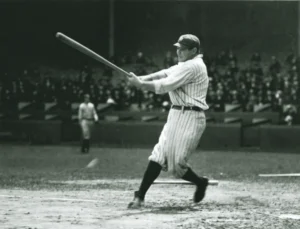
Babe Ruth’s Baseball Bat is the most expensive baseball bat in the world. Babe Ruth’s baseball bat is more than just a piece of sports equipment—it is an emblem of baseball history and a symbol of the game’s golden era. Ruth, often referred to as the “Bambino” or “The Great Bambino,” revolutionized the sport with his unprecedented power and charismatic personality.
Throughout his career, he swung various bats, but there are a few iconic ones that have become legendary. The most notable among them is the Louisville Slugger bat, with its distinct weight and dimensions, which perfectly suited Ruth’s remarkable hitting ability.
Babe Ruth’s baseball bat represents the sheer dominance and unmatched legacy of a player whose impact on the game remains unmatched. Today, these bats are highly sought after by collectors and enthusiasts who cherish the opportunity to own a piece of baseball’s most legendary figure.
Lou Gehrig Bat
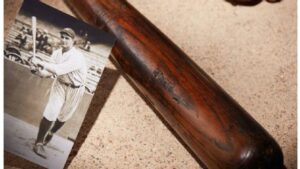
Lou Gehrig Bat is the 2nd most expensive baseball bat in the world. Lou Gehrig, known as the “Iron Horse,” is regarded as one of the greatest baseball players of all time. Throughout his illustrious career with the New York Yankees, Gehrig’s extraordinary hitting ability and unwavering dedication earned him a place among the sport’s elite.
The significance of Gehrig’s baseball bats is deeply intertwined with his remarkable accomplishments on the field. From his powerful swings to his consistent performance, Gehrig’s bats became synonymous with excellence and reliability. The mere mention of his name evokes images of iconic moments and memorable home runs.
Today, the scarcity and historical value of Lou Gehrig’s bats make them highly coveted among collectors and avid baseball enthusiasts, serving as a tangible link to the indelible legacy left by the “Iron Horse” himself. Owning a Lou Gehrig bat is not just a possession; it is an opportunity to connect with the enduring spirit of one of baseball’s true legends.
Ty Cobb Bat
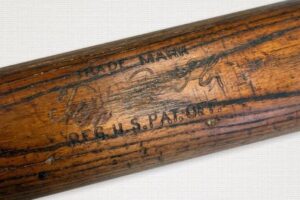
Ty Cobb Bat is the 3rd most expensive baseball bat in the world. Ty Cobb, known as “The Georgia Peach,” was a baseball legend whose career spanned over two decades. Renowned for his exceptional hitting skills and aggressive playing style, Cobb is widely regarded as one of the greatest hitters in the history of the game. His baseball bat holds a special place in the annals of baseball history, symbolizing the tenacity and unmatched talent that characterized Cobb’s approach to the game.
Cobb’s bats were crafted to his precise specifications, reflecting his preference for a balanced feel and exceptional control at the plate. The sheer rarity and significance of a Ty Cobb bat make it a coveted treasure among collectors and fans alike.
Owning a piece of Ty Cobb’s legacy in the form of his bat is an invitation to immerse oneself in the rich tapestry of baseball history and pay homage to a true icon of the sport.
Joe Jackson Bat
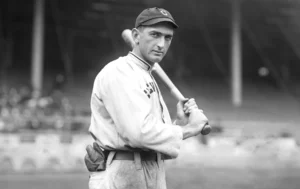
Joe Jackson Bat is the 4th most expensive baseball bat in the world. Joe Jackson, also known as “Shoeless Joe,” was a legendary figure in baseball. Jackson’s undeniable talent and prowess as a hitter cannot be overlooked. His baseball bat holds a unique place in the annals of the sport, representing the raw power and natural ability that made Jackson a formidable force on the field.
Each swing of his bat seemed to effortlessly generate explosive hits, earning him a reputation as one of the greatest hitters of his time. Today, Joe Jackson’s bats are highly sought after by collectors and enthusiasts, serving as a tangible connection to the bygone era of early baseball and the enigmatic legacy of Shoeless Joe.
Owning a Joe Jackson bat is not only a testament to the game’s rich history but also an appreciation of the remarkable talent and enduring allure of one of baseball’s most intriguing figures.
Kirk Gibson Bat
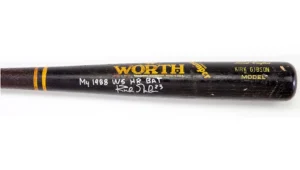
Kirk Gibson Bat is the 5th most expensive baseball bat in the world. Kirk Gibson’s baseball bat represents a moment of sheer determination and triumph in the world of sports. Gibson’s iconic home run during Game 1 of the 1988 World Series, despite battling injuries, has become etched in baseball folklore.
The bat he wielded on that fateful night holds a special place in the hearts of fans and collectors alike. It symbolizes the indomitable spirit of an athlete who defied the odds and delivered an unforgettable moment of glory. Gibson’s bat serves as a reminder that in sports, anything is possible, and that true greatness often emerges in the face of adversity.
With its historic significance and the emotional resonance it carries, owning a Kirk Gibson bat is an invitation to relive a monumental moment in baseball history and celebrate the remarkable accomplishments of one of the game’s true heroes.
Jackie Robinson Bat
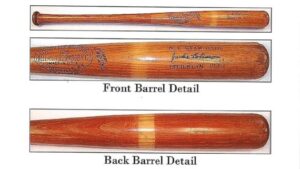
Jackie Robinson Bat is the 6th most expensive baseball bat in the world. Jackie Robinson’s baseball bat represents a symbol of courage, resilience, and breaking barriers. Robinson faced tremendous challenges and discrimination as the first African American player to break the color barrier in Major League Baseball. Yet, his incredible talent and unwavering determination paved the way for generations of players and forever changed the face of the game.
Robinson’s bat became an extension of his character on the field, showcasing his exceptional hitting skills and serving as a powerful tool to challenge racial prejudice. The significance of Jackie Robinson’s bat extends far beyond the game itself, as it stands as a testament to his enduring legacy and the transformative impact he had on American society.
Today, owning a Jackie Robinson bat represents more than just a piece of sports memorabilia—it is a tribute to a true trailblazer who used his bat to shatter barriers and inspire a new era of equality in baseball and beyond.
Adrian “Cap” Anson Bat

Adrian “Cap” Anson Bat is the 7th most expensive baseball bat in the world. Adrian “Cap” Anson, a baseball pioneer and one of the sport’s early superstars, left an indelible mark on the game with his exceptional skills and remarkable career. As a renowned player in the late 19th century, Anson’s baseball bat holds significant historical value and embodies the spirit of the early days of the sport.
Anson was known for his precision hitting and versatility on the field, making his bat a powerful instrument in shaping the outcome of games. Owning an Adrian “Cap” Anson bat is like possessing a tangible link to the roots of baseball, a testament to the skill and dedication of a true legend. It is a connection to a bygone era when the game was still evolving, and Anson’s bat serves as a reminder of the rich history and enduring legacy of baseball’s earliest stars.
For collectors and enthusiasts, an Anson bat represents not only a prized possession but a cherished piece of baseball history that continues to inspire awe and admiration to this day.
Joe DiMaggio Bat
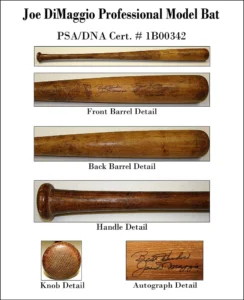
Joe DiMaggio Bat is the 8th most expensive baseball bat in the world. Joe DiMaggio’s baseball bat is a revered artifact that encapsulates the grace, skill, and legendary status of one of the greatest players to ever step foot on a diamond. Known as the “Yankee Clipper,” DiMaggio’s career was filled with extraordinary accomplishments, including his remarkable 56-game hitting streak in 1941.
DiMaggio’s bat became an extension of his talent, a catalyst for his precise swings and powerful hits. Each crack of the bat echoed with his iconic presence and showcased his unparalleled ability to dominate the game.
Today, a Joe DiMaggio bat is more than a piece of sports memorabilia; it is a symbol of excellence, a tangible connection to the golden age of baseball, and a reminder of the enduring impact left by a true legend of the sport.
Whether displayed in a collection or held in the hands of a fan, a Joe DiMaggio bat evokes the magic and excitement of baseball’s storied past, keeping alive the legacy of a remarkable athlete who forever left his mark on the game.
Frequently Asked Questions
What size baseball bat?
Baseball bats come in various sizes, and the appropriate size depends on the player’s age, height, weight, and personal preference. In general, youth players typically use bats with smaller barrel diameters and shorter lengths to suit their smaller stature and improve bat control.
As players progress to higher levels, such as high school and college, the bat size tends to increase to accommodate the physical development and power of the athlete. Adult baseball bats typically range from 31 to 34 inches in length, while the weight of the bat is measured in ounces. Players need to find a bat that feels comfortable, and balanced and allows them to generate optimal swing speed and power.
Ultimately, choosing the right size baseball bat is a matter of finding the right balance between control, power, and personal preference.
How to hold a baseball bat?
Properly holding a baseball bat is essential for achieving a solid grip and maximizing your swing potential. Here’s a step-by-step guide on how to hold a baseball bat:
1. Stand in your batting stance, with your feet shoulder-width apart and your knees slightly bent.
2. Hold the bat with both hands, placing your bottom hand (usually the dominant hand) closer to the knob of the bat. Your top hand should be placed slightly above your bottom hand, gripping the bat just above the label.
3. Keep a firm grip on the bat without squeezing too tightly. Your grip should be strong but not overly tense, allowing for flexibility and bat control.
4. Position your hands comfortably on the bat, ensuring that there is no excessive overlap between your top and bottom hands. Some players prefer to have their hands close together, while others prefer a slightly wider grip.
5. Align your knuckles. The knuckles of your bottom hand should be aligned or slightly stacked, pointing towards your front shoulder. This helps with bat control and allows for proper wrist rotation during the swing.
6. Maintain proper hand positioning throughout your swing, keeping your wrists flexible and allowing for a fluid motion. Avoid any excessive tension or twisting of the wrists.
7. Practice your grip and swing regularly to develop muscle memory and improve your bat control and hitting technique.
Remember, grip preferences may vary among players, so find a grip that feels comfortable and allows you to generate power and control in your swing. It’s also a good idea to seek guidance from a coach or experienced player who can provide additional tips and personalized advice on holding the baseball bat.
How long is a baseball bat?
Baseball bats come in various lengths depending on the age group and level of play. Here are some general guidelines for baseball bat lengths:
– T-ball and youth baseball: Bats for T-ball and youth players typically range from 24 to 29 inches in length.
– Little League and Youth Baseball: For Little League and Youth Baseball, bat lengths typically range from 27 to 32 inches.
– High school and college baseball: In high school and college baseball, bats are commonly 32 to 34 inches in length.
– Adult baseball: Adult baseball bats are typically 33 to 34 inches in length.
It’s important to note that different leagues and organizations may have specific rules and regulations regarding bat lengths, so it’s always a good idea to check with your league or coach for any restrictions or requirements.
Choosing the right bat length is crucial for bat control and hitting performance. Factors such as the player’s height, weight, and personal preference should be considered when selecting the appropriate bat length. It’s recommended to try out different bat lengths and consult with coaches or experienced players to determine the most suitable length for your individual needs.
How to measure a baseball bat?
Measuring a baseball bat is a straightforward process that allows you to determine its length accurately. Here’s a step-by-step guide on how to measure a baseball bat:
1. Place the bat vertically on a flat surface, with the barrel (thicker end) of the bat resting on the ground.
2. Position a tape measure or ruler next to the bat, ensuring that it is aligned with the bottom edge of the knob (the rounded end of the bat).
3. Extend the tape measure or ruler along the length of the bat, following the contour of the bat’s handle and barrel.
4. Read the measurement at the end of the bat, where the taper (the thinner section) starts. This measurement represents the length of the bat.
5. Take note of the measurement in inches or centimeters, depending on your preference.
It’s important to measure the bat accurately, as even a slight difference in length can affect your swing and hitting performance. If the bat has a flared knob, measure to the point where the knob starts to flare out.
Keep in mind that different leagues and organizations may have specific regulations regarding bat lengths, so make sure to check the guidelines applicable to your playing level or league.
By following these steps, you can determine the precise length of a baseball bat and ensure that it meets your needs and complies with any relevant rules and regulations.
What is a baseball bat made of?
Baseball bats are typically made of wood or metal, although other materials such as composite materials are also used in some cases. Here are the common materials used for baseball bats:
1. Wood: Traditional baseball bats were historically made entirely of wood, and wooden bats are still widely used in professional baseball leagues. The most common types of wood used for baseball bats are ash, maple, and birch. Each wood type has its characteristics, such as ash being lightweight and flexible, maple being dense and durable, and birch providing a balance of both.
2. Aluminum: Metal baseball bats, often made of aluminum or alloy, have gained popularity in amateur and youth leagues. Aluminum bats are lightweight, durable, and offer a larger sweet spot, resulting in increased hitting power. They also require less break-in time compared to wooden bats.
3. Composite: Composite baseball bats are constructed using a combination of materials, typically a blend of carbon fiber, graphite, and resin. These bats offer advantages such as enhanced performance, durability, and reduced vibration. Composite bats can be used in leagues that permit non-wood bats, such as some high school and college divisions.
It’s important to note that different leagues and organizations may have specific regulations regarding the type of bats allowed, particularly in terms of materials and certifications. Therefore, it’s crucial to check the guidelines applicable to your playing level or league to ensure compliance with the rules.
What is the best baseball bat?
Determining the best baseball bat depends on various factors, including personal preference, hitting style, league regulations, and skill level. Here are a few popular baseball bat options that are highly regarded:
1. Wooden Bats: Many professional players prefer wooden bats, with maple and ash being the most commonly used woods. Some popular brands for wooden bats include Louisville Slugger, Marucci, and Rawlings.
2. BBCOR Bats: For high school and college players, BBCOR (Batted Ball Coefficient of Restitution) bats are required. These bats have a reduced trampoline effect, resulting in a more controlled and safer game. Some reputable BBCOR bat brands include Easton, DeMarini, and Rawlings.
3. Alloy/Metal Bats: Metal or alloy bats, such as those made of aluminum, are popular among youth players due to their durability, lightweight design, and affordability. Easton, Louisville Slugger, and Rawlings are well-known brands for alloy bats.
4. Composite Bats: Composite bats, constructed with a combination of materials, offer a blend of performance and durability. They often have more prominent sweet spots and reduced vibration compared to other bats. Easton, Louisville Slugger, and DeMarini are recognized for their composite bat offerings.
The best baseball bat for you ultimately depends on your individual preferences and requirements. It’s advisable to try out different bats, consider your hitting style, seek recommendations from coaches or experienced players, and review league regulations to find the bat that suits your needs and complies with any applicable rules.

